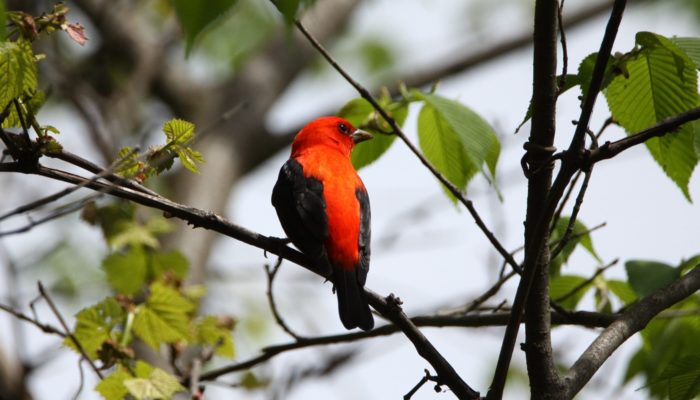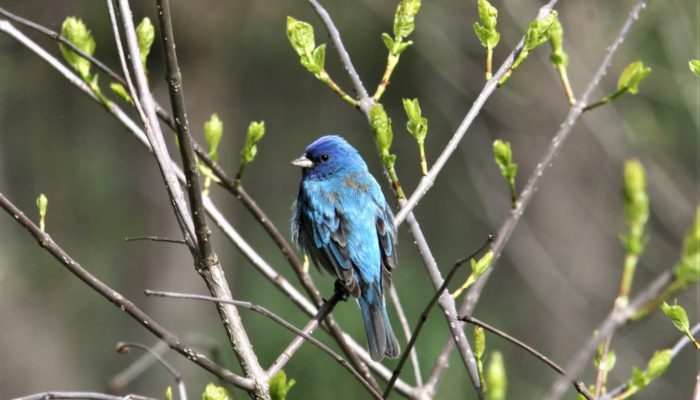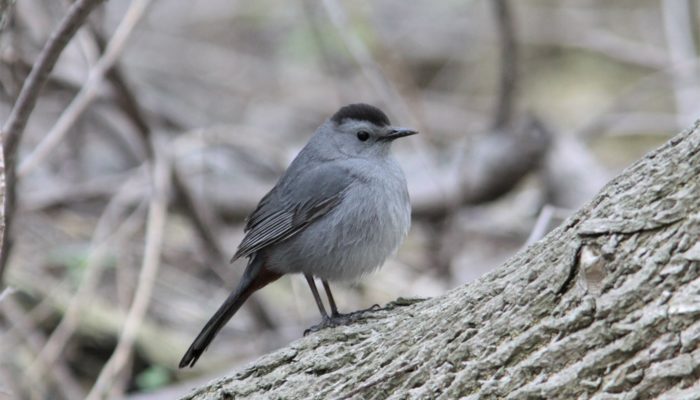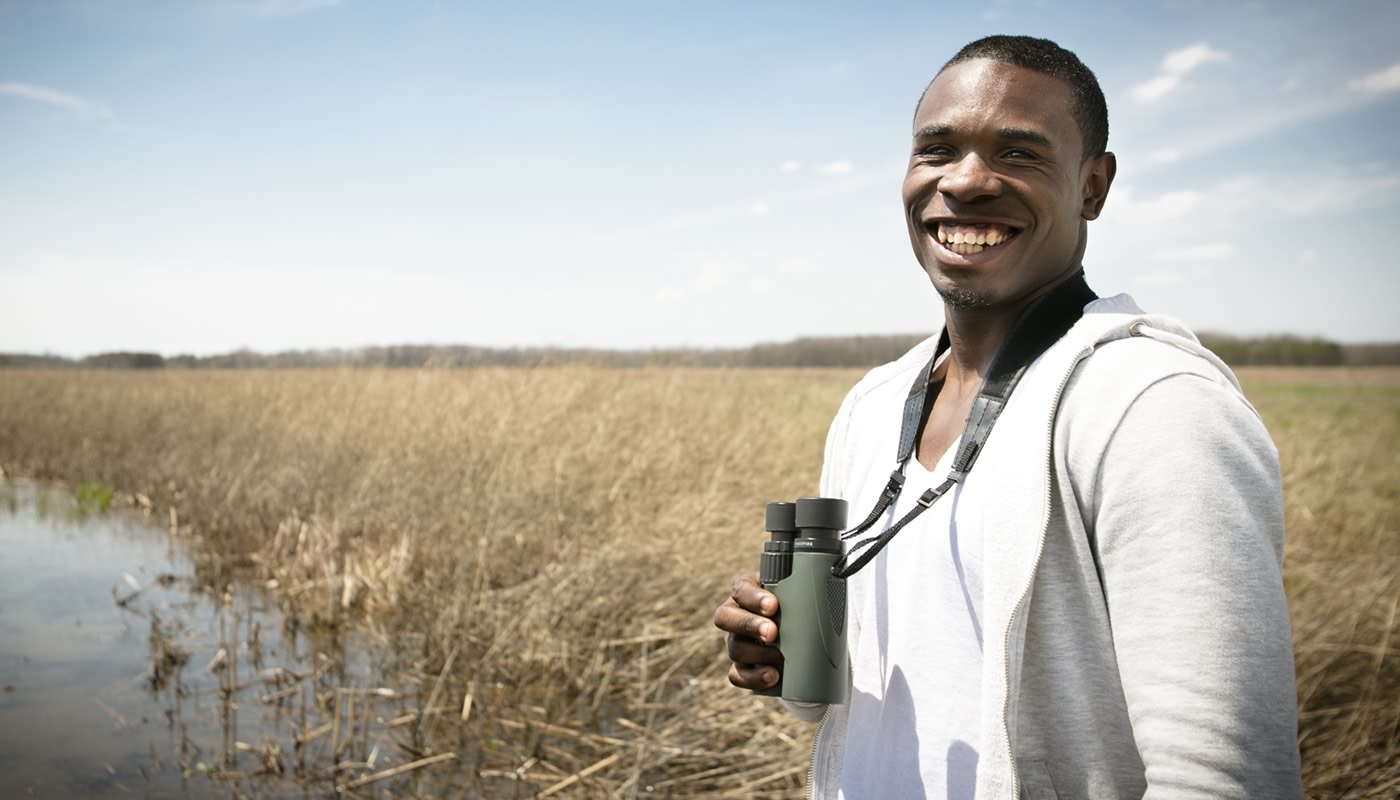Did you know you can #BirdThePreserves all year long! Check out some of the bird species you can spot during a springtime birding excursion:

Scarlet Tanager
A striking bird to see in spring and summer, male scarlet tanagers (Piranga olivacea) feature a bright red body with black wings and a black tail. Female scarlet tanagers appear more of a yellow/olive color, with a darker wing and tail. Following the breeding season, male scarlet tanagers will molt their striking red feathers and more closely resemble the female bird. Summer tanagers can be spotted in forest habitats, with a preference for oak trees.

Rose-breasted Grosbeak
With a stunning rose-red chest, adult male rose-breasted grosbeaks (Pheucticus ludovicianus) are a beautiful bird to spot in neighborhoods and in the openings of forest habitat in the Forest Preserves. Female rose-breasted grosbeaks feature stunning brown streaks down their white chests. With a sweet song similar in sound to the American robin, this bird can be spotted throughout spring and summer. Both male and female rose-breasted grosbeaks share in incubating eggs, as well as work together to feed their babies.

Indigo Bunting
A vibrant blue bird, the male indigo bunting (Passerina cyanea) can be spotted in open woodlands through late spring and early summer. This bird enjoys a diet of berries, seeds and insects, and may be seen searching for food on the ground as well as in shrubs. Female indigo buntings are brownish in color and take the lead on building nests close to the ground, incubating eggs, and feeding their young.

Baltimore Oriole
With a brightly hued chest, Baltimore orioles (Icterus galbula) are an exciting sight for birders of all levels. These birds are often heard and not seen because they forage high in trees for flower nectar, fruit and insects. Baltimore orioles are drawn to spring’s flowering trees and shrubs in open woodlands where they use their paintbrush-like tongue to lap the sweet nectar they offer.

Gray Catbird
As its name implies, the call of the gray catbird (Dumetella carolinensis) resembles the mewing of a cat. With a mostly gray body, gray catbirds also feature black feathers on their head and rust-colored feathers under their tails. This bird may be spotted foraging for insects or berries on the ground and prefer a habitat of dense shrubs.
Interested in learning more about birding? Check out our schedule of events for guided bird walks, presentations on how to get started, and more! Find a birding checklist and other resources on our Birding webpage.
Learn more about these bird species by visiting The Cornell Lab’s All About Birds webpage or Audubon.org.

